As we get into the frightful weather season, it’s important to think not just about how you can stay warm but how your best friend can stay warm, too.
Keeping your dog warm in the winter months is important for many short-haired dog breeds, like Chihuahuas and greyhounds.
But, no matter the breed, there are parts of any dog, like your dog’s paws, that you want to make sure stay toasty warm.
So during those cold temperatures in the midst of winter, how can you keep your best friend warm and healthy? Let’s look at some things you can do as well as why it’s important.
Dangers to Your Dog Associated with Cold Weather

Just like humans, your dog is subject to problems with exposure to harsh winter weather. This is particularly true if they are exposed to cold temperatures for long periods of time.
Outdoor dogs are at a higher risk of hypothermia and frostbite, but any dog left outside for too long can be at risk as well. As with humans, their extremities are particularly susceptible to cold injury.
Ear tips, paws, and the tip of their tails are among those areas of the body that are the areas most at risk. This is why it’s important to ensure you take the necessary precautions to ensure they can keep their body temperature at a healthy level.
What Temperature Is Too Cold?
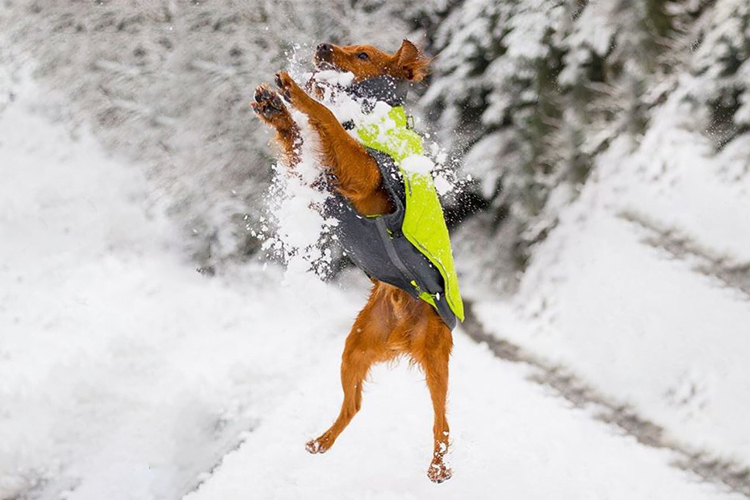
In general, when the outside temperature gets down to around 50 degrees Fahrenheit, you want to be on alert. But you also have to be aware that each dog is an individual. While dogs will grow a winter coat, some dogs have more hair available than others, and no dog can withstand certain extremes.
Some dogs may feel cold in temperatures that are actually higher than 50 degrees. If your pup is shivering, refusing to walk, or trying to drag you home, that may be their way of telling you that it’s too cold for them.
Of course, it also depends on your dog’s breed and age. Small dogs like Chihuahuas may feel colder than large dogs with more hair, like huskies and Alaskan malamutes. Your furry friend’s age is also a consideration.
Senior dogs and puppies should be monitored more closely in extreme temperatures. Additionally, pregnant dogs and dogs with an illness are at a higher risk.
Outside dogs are also more likely to have problems, and if you’ve got an older dog that also lives outsides, that increases his risk exponentially. In short, a lot depends on your pooch’s individual circumstances as well as the climate you live in and his exposure to the outside temperatures.
How to Keep Dogs Warm in Winter
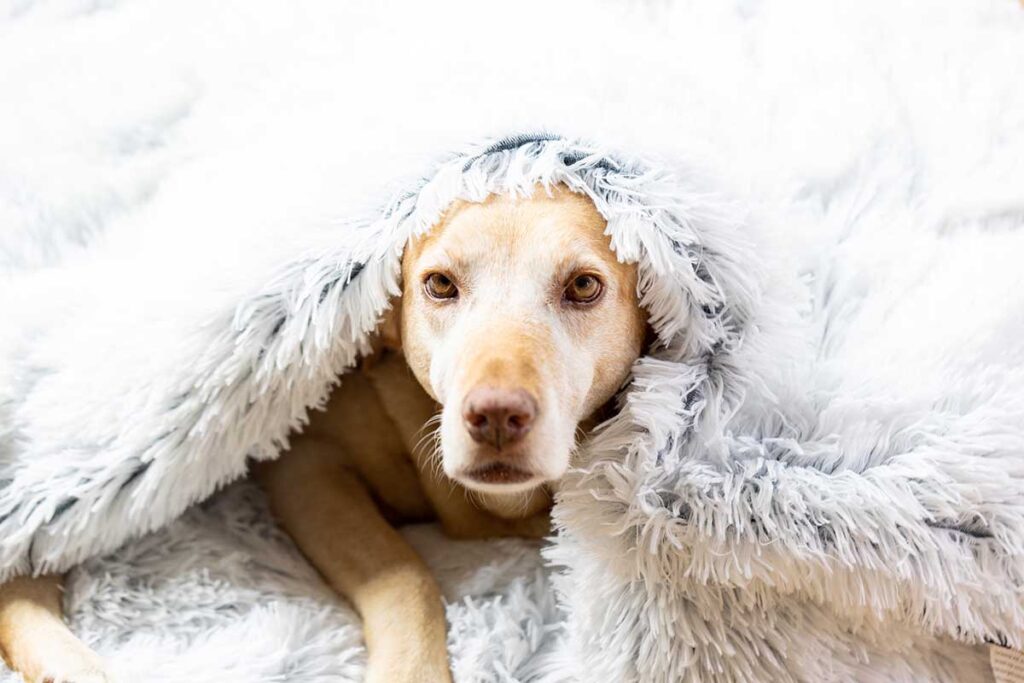
There are several things you can do to help keep dogs warm in the colder months. Let’s take a look at several options you can choose to help keep your furry friend’s body heat at the right level.
Give Your Dog a Warm Dog House
There’s nothing better than a cozy dog house or kennel to help warm up your pooch. You might not think it helps much, but just having something with four walls to protect from the elements can greatly reduce the effects of cold weather.
Ideally, you want an outdoor shelter to be at least four inches off the ground and with a roof that slopes so it will shed the snow or rain. You can also lay down straw for additional warmth and padding.
It’s also a good idea to put the dog house in a warm place in the yard or porch. You might put it where it is sheltered on one side or where the son will warm up your dog’s house during the day.
Give Your Pooch a Cozy Dog Bed
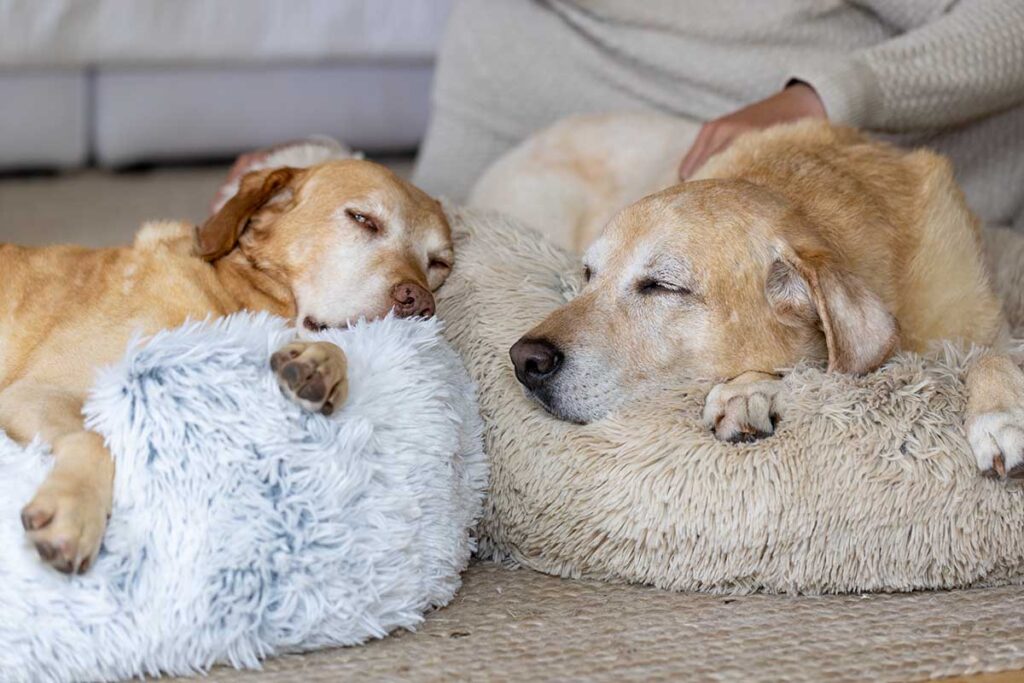
A warm, cozy bed with a thick blanket or another type of warm bedding will provide plenty of warmth for your furry friend during the cold winter months.
If your best buddy sleeps in a very drafty part of the house, you might also want to provide a heated dog bed by using a self-warming pet mat. You can also give him a mat with a removable, microwavable heating pad. That will ensure he stays toasty warm on those cold days.
When you’re using a bed, however, you want to keep in mind your dog’s safety. You need to make sure he can get into and out of the bed on his own and that he doesn’t get overheated. If you have any questions, just ask your veterinarian.
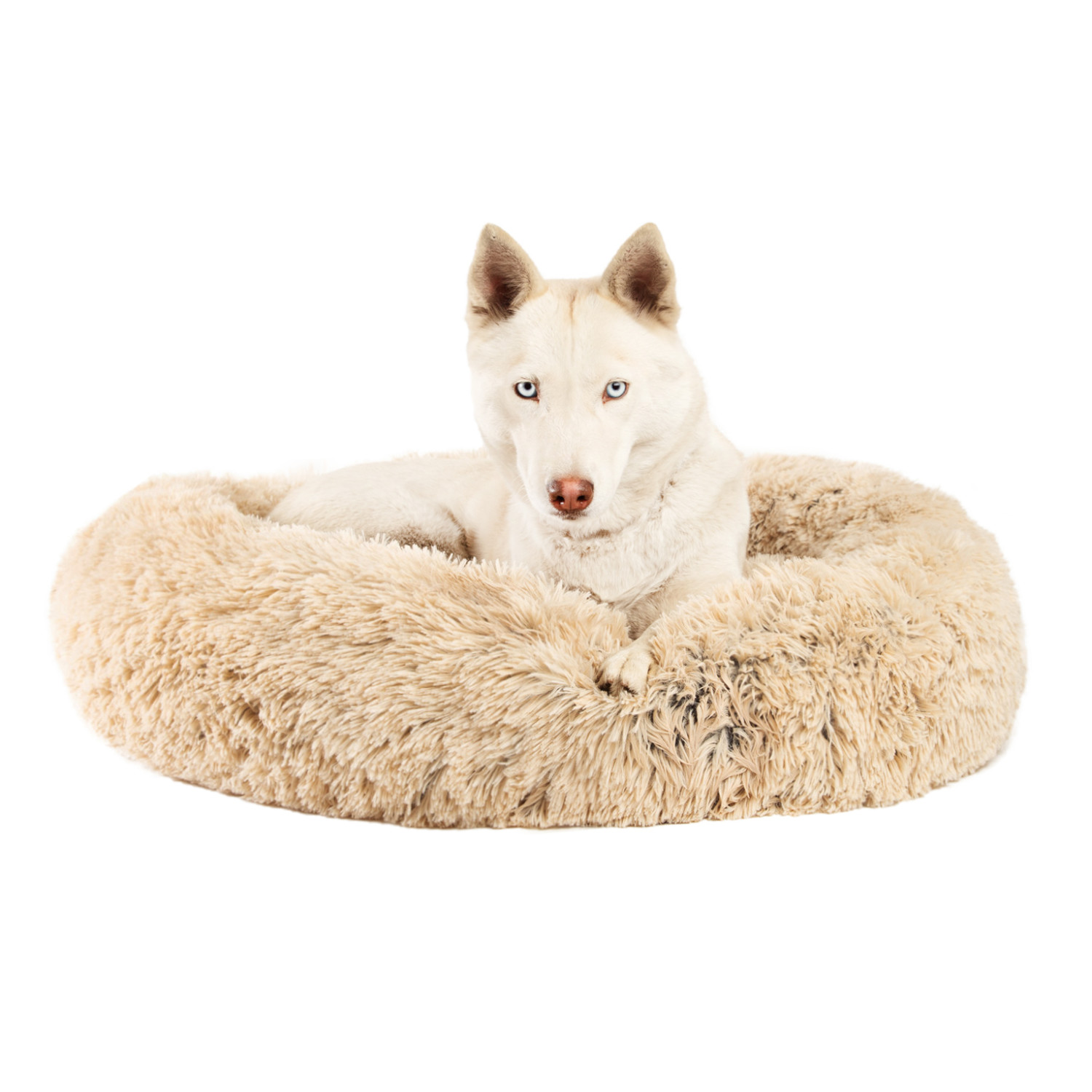
The Original Calming Donut Shag Cat & Dog Bed
Give your pet more than just a dog bed! Best Friend’s by Sheri is the original creator of the most popular dog bed that has surfaced the internet in recent years: The Calming Donut Dog Bed. This innovative cuddler shag design provides better sleep, supports joints, and offers a calming, self-warming effect. The donut cuddler is carefully crafted with durable, vegan nylon and filled with AirLoft fibers,…
A Stylish Dog Jacket Can Also Help
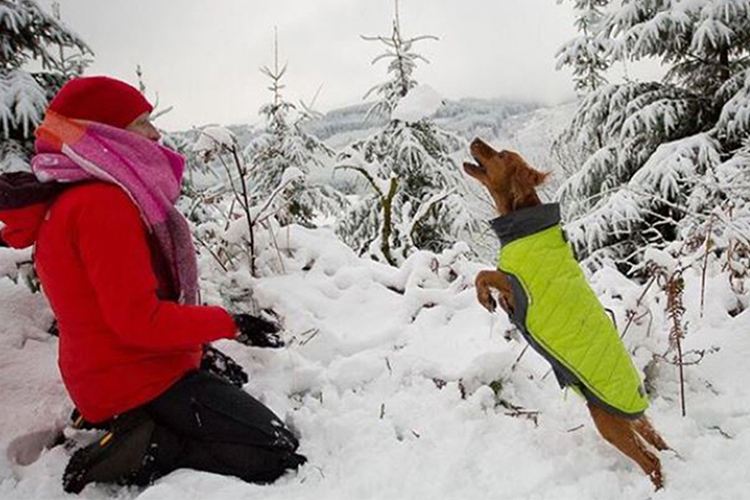
Dog coats are all the rage for staying in fashion, and there are a number of stylish jackets to choose from. Your doggy will be the talk of the town as he sports his very own winter coat to keep him warm.
Of course, not all dog breeds will need this since they have their own coats to keep them warm. Breeds like huskies and malamutes not only have longer hair, they have thick undercoats to keep them toasty in the worst weather.
Whippets and chihuahuas are two breeds that can benefit from a doggy jacket or sweater when they go outside.
To make sure his coat fits properly, measure around your dog’s neck, across his shoulders, and around the chest. That will give you the measurements you need as you look for some stylish designs.
It’s best to make sure the fit is not too snug and that the coat is free of zippers or other decorations that might pose a choking hazard.
You might also discover that your dog’s not into a coat. If he doesn’t tolerate it well, don’t force the issue. Instead, just limit the time he spends outside.
Don’t Forget About Your Dog’s Feet
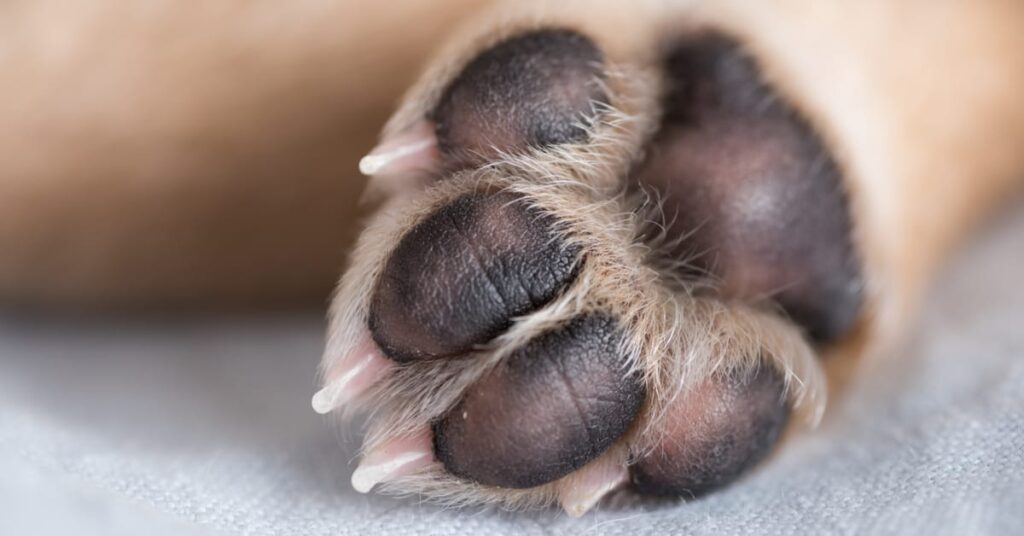
Your dog’s paws are one area where he loses a large amount of body heat. It can help to provide him with booties or paw pads to ensure he stays warm while he’s out running around.
There are other things you want to watch out for with his paws as well. Dog paws are one area that can become frostbitten. Additionally, snow and even ice can build up on the hair between his paw pads.
You can help by trimming away any excess hair from in between his toes and using those booties for protection when he’s outside.
You’ll also want to check for areas where the cold weather is cracking or drying his pads. There are moisturizers your veterinarian can recommend to prevent that from happening. It’s not a good idea to use human moisturizers since some of those might contain harmful ingredients.
What About Hypothermia?
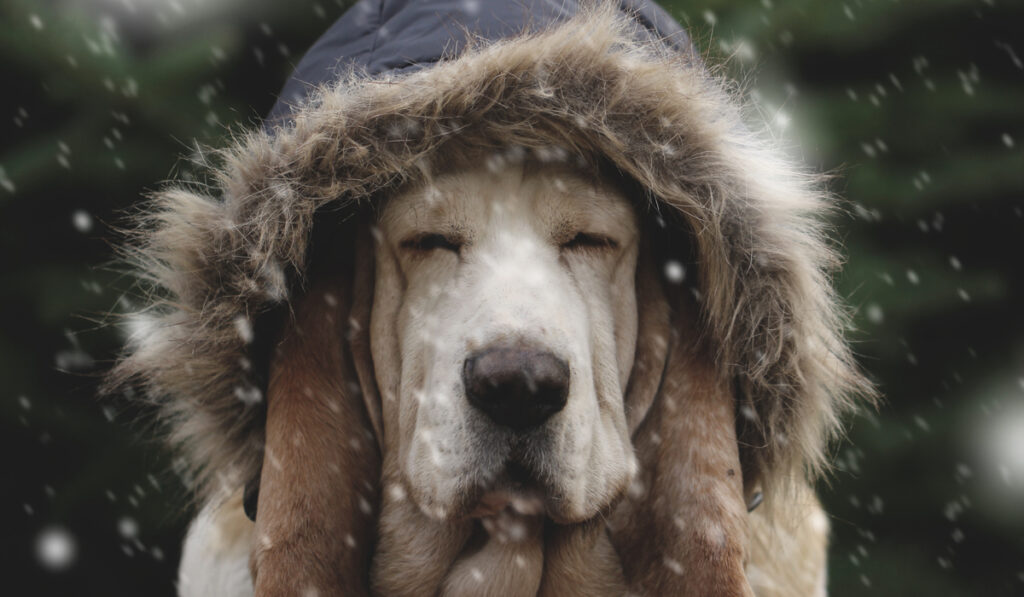
If your dog is exposed to cold temperatures for a long enough time, his body temperature can fall to dangerously low levels. That can lead to hypothermia.
Symptoms of Hypothermia
The following are signs of hypothermia:
- Weakness
- Low activity levels
- Inability to stop shivering
- Non-responsive
- Breathing and heart rate slows
Treatment for Hypothermia
If your dog has those symptoms after being exposed to cold weather, the first thing to do is get him to a warm place immediately.
You can also use a hot water bottle wrapped in a towel to warm him up. Don’t use the bottle without the towel, as that could burn your dog’s skin.
If your dog is non-responsive and/or his breathing and heart rate have slowed, you’ll need to take him to the veterinarian immediately. Your vet can administer treatments like warm intravenous fluids in advanced cases.
Other Winter Weather Tips
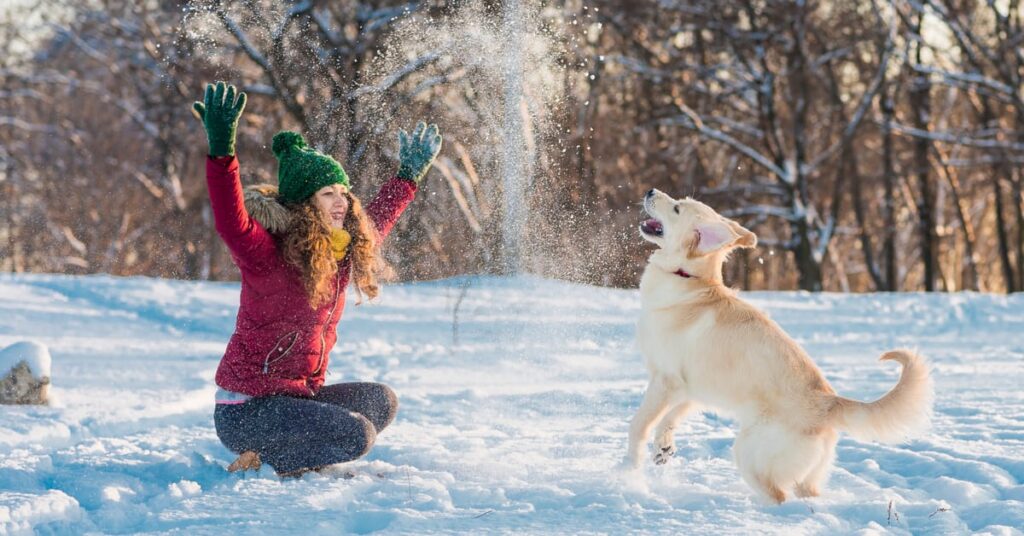
Here are some other safety tips for the cold winter months that you should know about.
- It’s good for your dog to continue to exercise during the wintertime, but let him warm up first. If the weather is really cold, you might want to opt to do something inside.
- Fireplace safety is something you need to consider. While a nice warm fire is cozy for your furry friend, you should never leave it unattended with your pet nearby. It’s also important to make sure you have a safety screen so that soot, flames, and embers can’t cause a problem with your pooch.
- Wintertime means filling the radiator of your car with antifreeze to prevent it from freezing. But antifreeze is sweet tasting and highly toxic for your dog, your cat, and your kids. Be sure to keep it stowed out of reach and out of sight. If you are filling your radiator or changing the fluid out, watch for puddles that may develop on the ground. Your pet will lick that up, and if he does, you’ll have a medical emergency on your hands.
- Likewise, space heaters can pose a burn hazard for your dog and other pets. If they get too close, they can be burned. They could also tip it over and start a fire.
- Finally, while you might think cold weather would take care of pests like fleas and ticks, they can survive through the winter too. You want to make sure you continue giving your dog preventative medicine for these pesky parasites.
How to Keep Dogs Warm in Winter: Final Thoughts
Winter can be a fun season for you and your best furry friend, but there are some things to consider to make sure everyone stays safe and comfortable. These tips can help you keep your doggy warm and cozy through the coldest times of the year. He’ll thank you by snuggling up with his favorite human friend, so everyone is warm and content.
 Chewy
Chewy Amazon
Amazon
